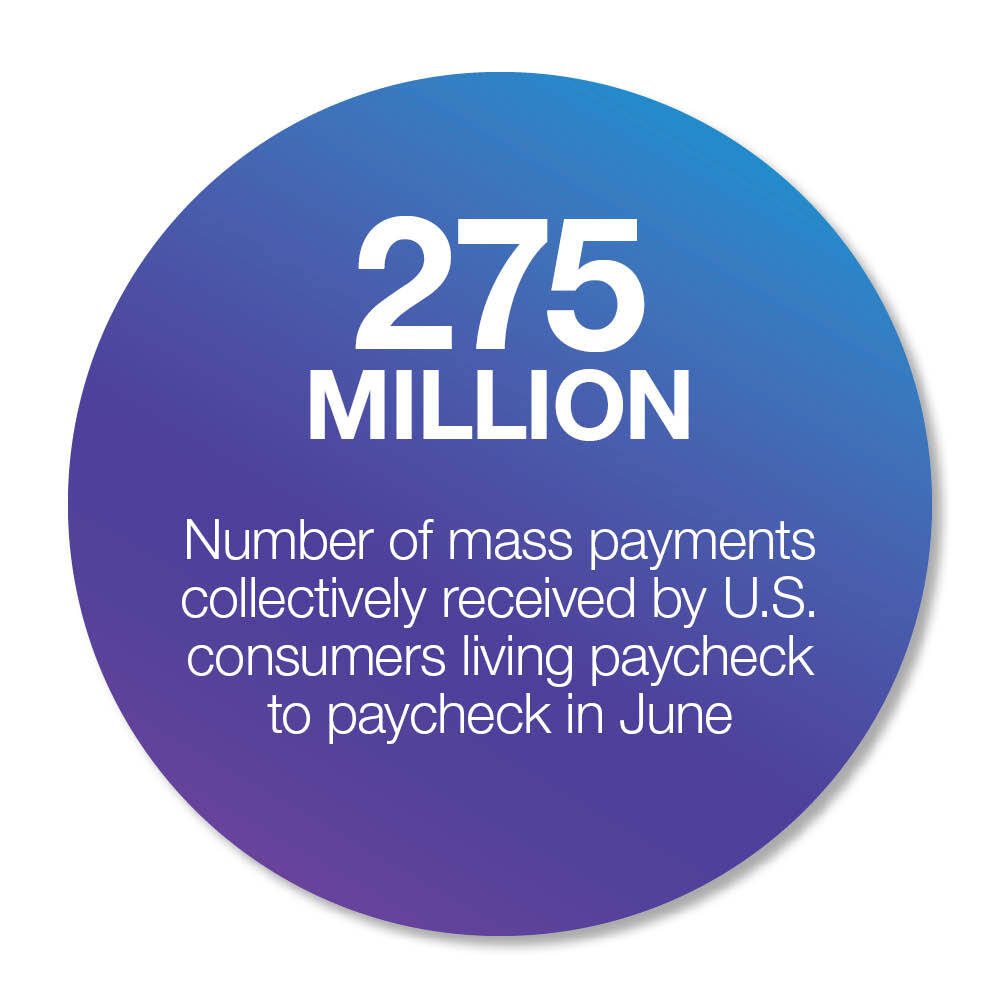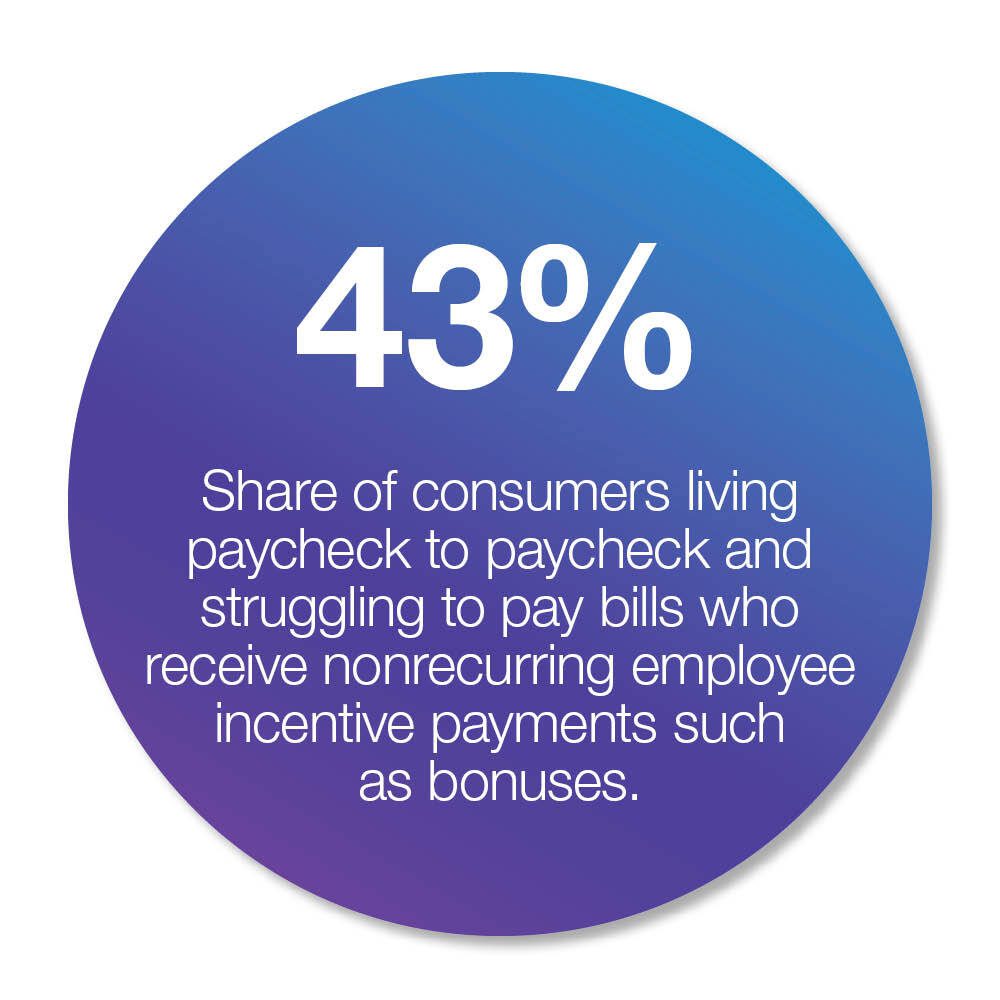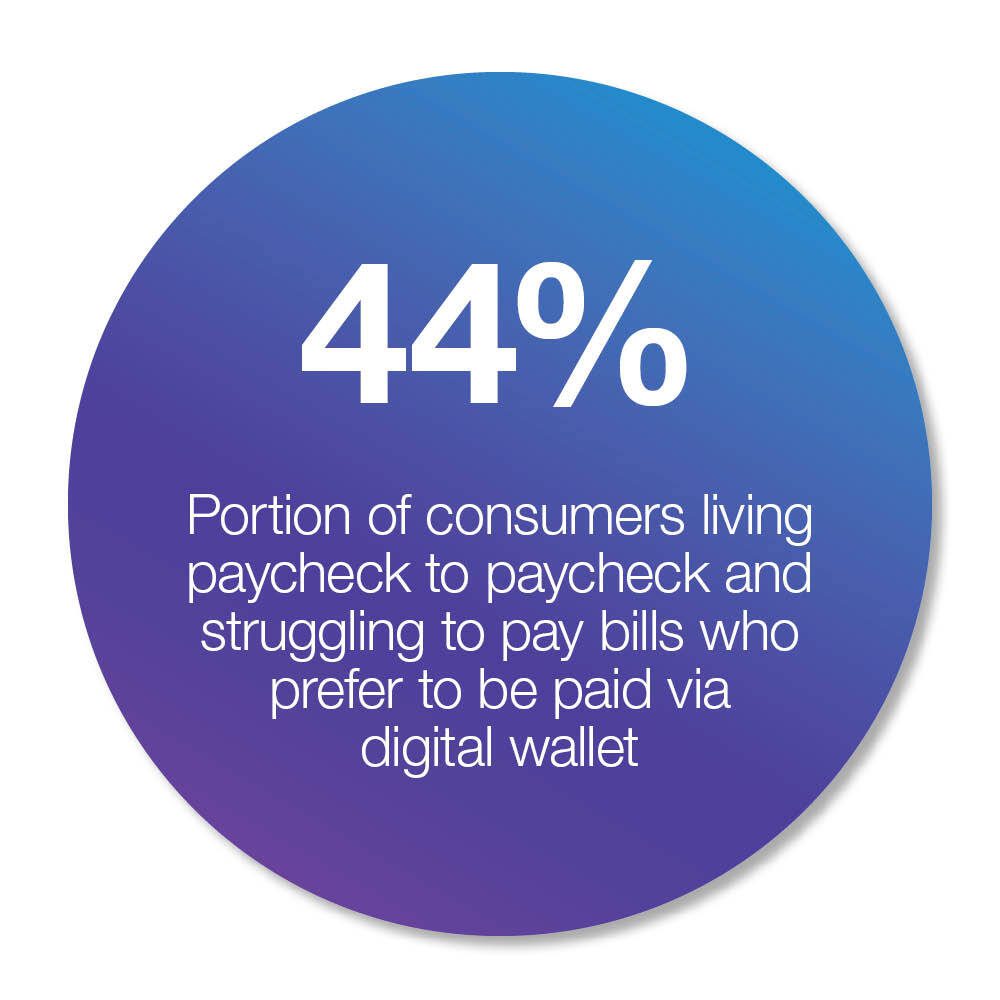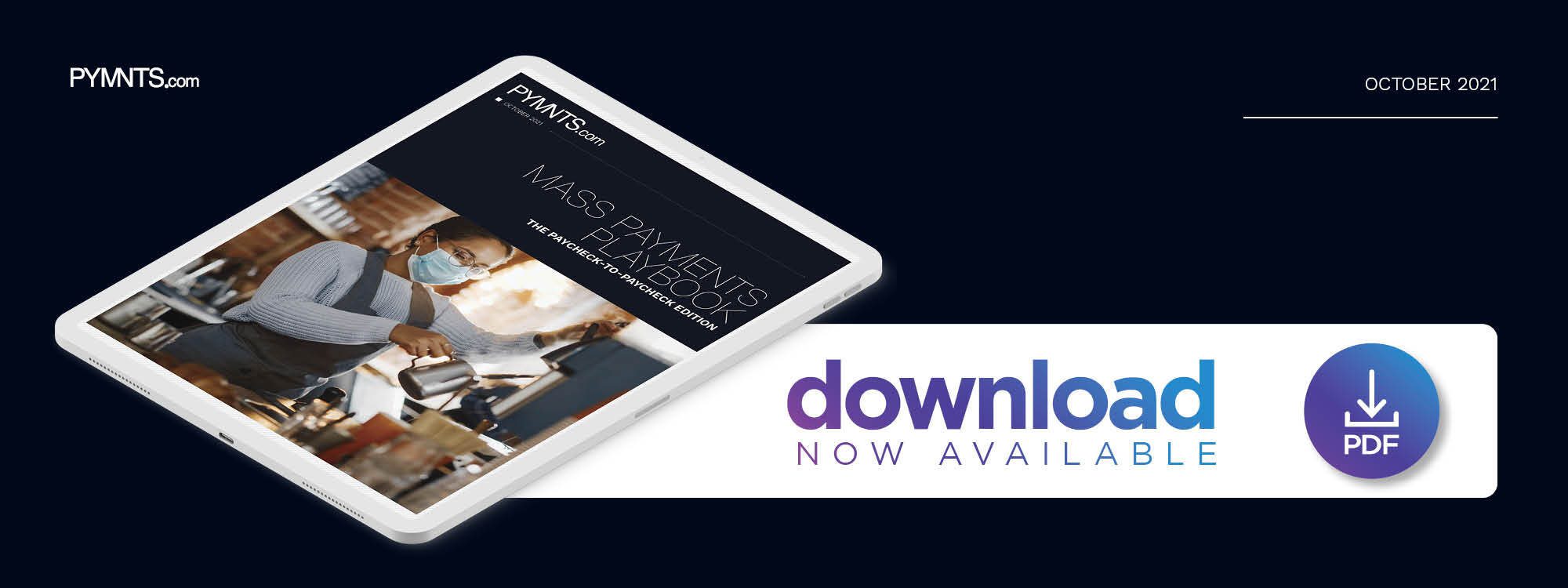NEW DATA: Cash Strapped Consumers Want Mass Payments Via Digital Wallets and Will Pay For Choice

Every dollar counts when money is tight. Even as little as $25 or $50 dollars can make a world of difference for consumers looking to manage their budgets. This is something that roughly 22 million United States consumers living paycheck to paycheck and struggling to pay their bills know all too well. These consumers rely on small, mass payments to stay afloat, whether they are lump sum employer payments, rebates, payments for participation in clinical trials or otherwise. 
Mass Payments Playbook: The Paycheck-To-Paycheck Edition explores the critical role that mass payments play in these consumers’ lives. We surveyed a census-balanced panel of 3,921 U.S. consumers about whether they received mass payments, the types of payments they received and whether they struggled to save up at the end of the month to learn more about how critical such payments can be to consumers’ financial wellbeing.
Key findings from the report include:
- Consumers living paycheck to paycheck receive more mass payments than any other demographic group. There are roughly 22 million consumers in the U.S. who are living paycheck to paycheck and struggling to pay their monthly bills. Each of these paycheck-to-paycheck consumers receives an average of 13 mass payments on any given month, while consumers who do not live paycheck to paycheck receive an average of just 5.4 mass payments per month.

- Mass payments recipients living paycheck to paycheck are used to having a choice in how they receive those payments – especially when it comes to being paid for product reviews and testimonials. Choice is especially important to employee incentive recipients living paycheck to paycheck and struggling to pay their bills, 35 percent of whom say they are usually allowed to choose between four or more methods of receipt. Another 40 percent say they are typically able to choose between two or three methods of receipt.
- Seventy-two percent of mass payments recipients who live paycheck to paycheck would pay an added fee if it meant receiving those payments in a method of their choosing. This goes to show how important choice in mass payment receipt is to consumers living paycheck to paycheck and struggling to pay their bills. Only 34 percent of mass payment recipients who do not live paycheck to paycheck would pay more to be able to choose their method of receipt.

The ability to choose how to get paid is one of many factors that consumers living paycheck to paycheck have come to expect when it comes to mass payments. Mass Payments Playbook: The Paycheck-To-Paycheck Edition details what consumers who are more reliant on mass payments for their financial wellbeing want from those payments experiences.
To learn more about the relationship between living paycheck to paycheck and their preferences for mass payment receipt, download the report.

